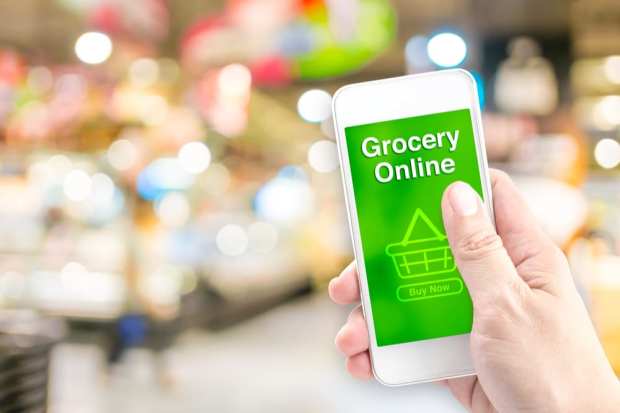Online Grocery Tees Up A Post-Crisis Market

It’s easy to play Monday morning quarterback for the growth of online grocery. When consumers need essential items but get scared by a high-touch environment, it’s only natural for online numbers to spike. The tough call will be whether online grocery is something that “sticks” when the coronavirus crisis is safely in the rearview mirror.
The prevailing data and wisdom at this point is that, yes, online grocery has spiked due to COVID-19. But while the spike has been dramatic, online grocery was well on its way to a breakout year before the crisis.
According to data from Rakuten Intelligence, online grocery rose dramatically from March 12 through March 15, compared to 2019. The dollar value of orders from full-assortment grocery merchants during that period — for buy online, pickup in store (BOPIS) as well as home delivery, went up 210 percent. The number of orders grew 151 percent. For the period of Jan. 1 through March 15, sales increased 61.3 percent and the number of orders rose 57.6 percent by the same comparison.
BOPIS orders saw the highest increases. BOPIS grew 111 percent from March 12 through March 15, compared with 38.9 percent and 39 percent for Jan. 1 through March 15.
Jaimee Minney, senior vice president of marketing at Rakuten Intelligence says the coronavirus pandemic is introducing shoppers to the concept. “That could have a lasting impact, assuming consumers view their experiences as positive, she says. How many consumers stick with online shopping depends in part on how understanding consumers are about supply chain disruptions that could affect what they can get and how quickly their orders arrive.”
Amish Jani, a partner in venture capital firm FirstMark Capital, agrees. He predicts the COVID-19 crisis “will be a net positive for all digital commerce, especially grocery and household supplies and things like that. You’ll see a bump from this, and that behavior will persist going forward. This is a forced way to re-train a broad swath of consumers,” Jani said. “You’re certainly going to come out not worse off in terms of digital sophistication, and there’s an argument to be made that people will be more familiar with ways to get things delivered to their doorsteps without going out.”
An analysis from eMarketer concurs. Before the coronavirus crisis it forecast U.S. food and beverage eCommerce sales to rise 23.4 percent to $32.22 billion this year. According to TABS Analytics, 2019 was a year of growth for online grocery retail. Overall penetration among U.S. internet users jumped from 38 percent in 2018 to 56 percent in 2019, while the percentage of those who regularly ordered groceries online spiked from 17 percent to 37 percent.
“Millions of first-time online grocery buyers are materializing, and millions of infrequent buyers are now doing so on a weekly basis, vs. over multiple weeks or months,” according to eMarketer. “Of course, these shoppers will eventually return to stores. But if households that had previously used eCommerce for just one out of every 10 grocery trips were to permanently shift to one out of every five, the long-term impact would be profound.”
Walmart has been one of the beneficiaries of the trend. According to Marketplace Pulse, Walmart Grocery’s app entered the top 10 on March 11 and had soon closed in on the top, second only to Amazon. On April 2, it overtook Amazon for the top spot. “Just a few years ago, we had … no U.S. stores with online grocery pickup, and we didn’t deliver groceries,” said Walmart Chief Financial Officer Brett M. Biggs. “Now, we have about 3,200 stores with pickup and 1,600 stores with delivery.”
